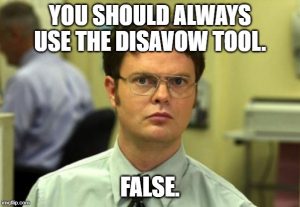HARO, not Halo. I can’t help your gaming skills. And don’t get me started on that bastardized TV show version.
When was the last time one of your HARO responses were used and published? Have you used HARO in the past and just felt like you were spinning your wheels?
I regularly coach clients on how to answer HARO questions, and we regularly capture link opportunities this way.
I get them myself too.




HARO provides an opportunity to get links from publications such as The New York Times and Washington Post, as well as many smaller publications and websites. These are legitimate, editorial links and not the junk links from Forbes, Inc., or the Huffington Post you may see advertised in low quality link marketplaces like Fiverr or in Facebook groups.
In addition to links, clients have gotten appearances on televised news casts and developed relationships with journalists where they will get contacted directly to answer future queries.
There are some common mistakes I see people make in how they utilize HARO and respond to queries. If you eliminate these mistakes, you could see your success rate increase substantially.
What is Help a Reporter Out?
If you are not familiar with Help a Reporter Out (HARO), it is a service that anyone can sign up for at helpareporter.com. You have two options when you sign up. You can register as a journalist or you can register as a source.
The way it works is that journalists who are writing a story or a piece of content for a website can submit a query to get a quote or multiple quotes from a source or range of sources that they can then use in their content.
You can be that source, and if they use your submission, they will link back to your website.
Three times a day, Monday through Friday, HARO will email out a list of queries from journalists that you can respond to.
Tips for securing links from HARO
I’m not sure how many people receive emails from HARO or how many people are reading the emails and responding to queries, but HARO has been around since at least 2008 that I know of. It’s frequently mentioned when people talk about ways to acquire links.
What I’m getting at is that there are probably a lot of people responding to most queries. Your responses being chosen is far from a forgone conclusion.
There are a few things you can do to stand out.
Strike fast. Strike hard. No mercy.
Wait, no. That’s Cobra Kai.
Anyhow, you need to respond quickly. Each query has a deadline. The closer your submission is to that deadline, the less likely it is to be used.
As I just mentioned, there are likely quite a few people responding to each query.
Put yourself on the journalist’s side of the equation. Once you have read through enough responses and have found a few quotes that fit your content, how likely are you to keep reading all the responses coming in?
Even if the deadline is in 3 days, you need to respond right away, ideally within the first few hours. Anything after that, and you are looking at greatly diminished chances of being selected.
Have a good headshot ready to go
This isn’t necessarily going to help you win links, but quite often I’ll see queries from popular publications that will request a link to a headshot to be included with responses. This request is frequently made on queries where the piece of content is going to be a roundup of experts type of thing.
These are some of the best ones to respond to because they are often going to choose 10, 20, or even more responses. That means you have a much better chance of being selected.
Like I said, this isn’t going to directly help you get chosen, but it does tie back into my first tip. It will help you respond much quicker when you have one of these on hand ready to go.
Be consistent
I’m not going to promise you that you will have a 50% success rate, or even anything remotely close to that. No matter how good you are at responding to HARO queries, you are still going to fail more than you succeed.
But if you want to see success, you need to be consistent. It’s a numbers game. The more you respond to, the more times your response will be selected.
This is not a pitch
Many of you are marketers, work with marketing teams, or have some marketing blood in you.
What do many marketers love to do? Over inflate value.
I have had clients send me their HARO responses before sending them off. No matter how many times I tell them this at the beginning, most of them in their first response or two write about two paragraphs about why their response should be chosen and then two sentences responding to the actual query.
This isn’t a resume. It’s not your LinkedIn profile.
If they want more information about you, they can go look at your website or your LinkedIn profile for themselves.
Give them what they want
And nothing more.
This isn’t the J. Peterman Catalog.
Stick to what they are asking for. Don’t give them an entire history on the topic to try to show off your knowledge. No tangents. No stories from your youth.
Except in the rare occasions where they specifically ask for a lot of detail, keep it short and sweet. Remember, they are likely getting tons of responses. If they see a wall of text, are they more or less likely to read that one?
Stand out
Never give a response you do not believe in just for the sake of standing out, but is there a way to give a slightly different take than what the masses are likely to in order to make your response stick out from the crowd?
If you know the topic, you will see some queries that you know people are going to respond with either A or B. Is there a third option that will differentiate your response from everyone else’s?
I’ll give an example. I once was chosen for an article discussing what the best project management app were.
Knowing that most responses were going to be the typical big players in the market, Monday, Asana, Clickup, etc., we instead crafted a different response.
The response that I crafted was basically that there is no best project management app, but there is a best app for YOUR project.
You have to use the right tool for the right job.
For task management, ClickUp works great.
For mind maps, MindMeister.
For collaborative white boards, Miro is best because…
For working with customers on web design, Figma is the best choice…
The response was more detailed than that, but you get the idea.
It was that simple, but it made the response stand out and it was selected.
Wrapping up
Remember. Respond quickly (with a headshot ready to go), be consistent, don’t hit them with a long-winded sales pitch, give them what they want, and try to stand out in your response.



